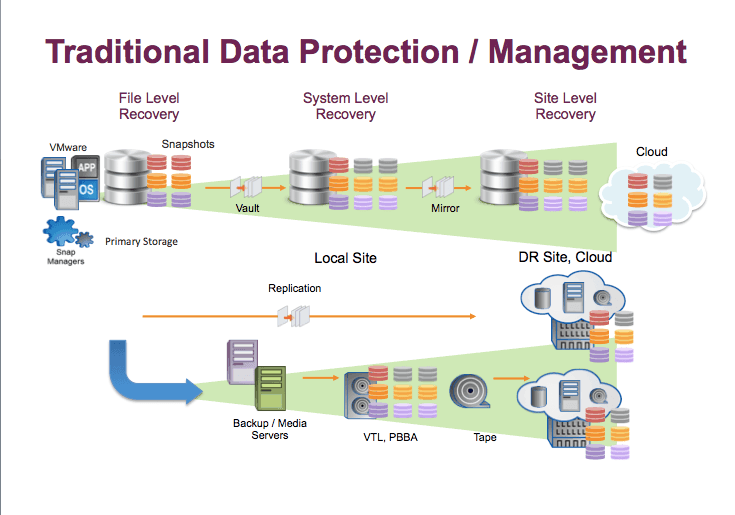Times they are a chanin’. To quote Steve Duplessie, Fouder of ESG and Frank Slootman, ex-CEO of Data Domain, “A legitimate market becomes an explosive market when it is built on a legitimate problem that is part of a "long term secular trend" - i.e., a trend that organically will get worse over time. This is the definition of backup (or data protection).
If you were to take a step back from your environment for a moment and you were told to you needed to build a data center to meet your company’s business objectives, would you build what exists today? Probably not! Now I realize that your in the current situation your in, not because things haven’t been built correctly, the reality is time is working against you. Things are moving so fast, and the business has so many requirements and needs that come up quickly, IT needs to make quick decisions and build out new solutions to meet these needs. The question is, what are you doing to get your data center in a state in which you want it?
Typically, no matter what new business need there is, it usually requires a copy of the production data. As you think about data proliferation in your environment, you realize that you have many processes today make a copy of production data for many different business use cases. It is this copying of data that is driving exponential data growth in the environment and costing you more money from a CapEx (storage hardware) and OpEx (storage management) perspective.
Additionally, in the main process that is designed to make a copy of your data, backup, you are probably making more copies than you realize. How many of you leverage snapshots as well as traditional backup software? (Figure 1 shows both snapshots and traditional backup.)

You do this because whenever someone asks you for some lost data, most IT folks cross their fingers and say “I hope to god I have that data in a snapshot!” Why? Because data recovery, more over, data access is MUCH simpler from a mounted snapshot. The reality today is, finding that data in your snaps is extremely difficult. The main reason is because there is no catalog of your snaps. Therefore you go to your backup software, because it does have a catalog and do your recovery. But if you had a catalog for your snapshots you would use your snaps, right?
Now, if you could instantly mount your snapshots wouldn’t you use it for more than just data recovery. You would use it for all data access requirements. Snapshots have really advanced quite a bit over the last few years. The underlying technology of snaps that take advantage of just doing block level incremental data movement, as well as space efficiency with copy on write technology that make them as efficient as deduplication when it comes to data movement as well as data stored. Taking advantage of snaps that can be brought up in any location, including the cloud, enables IT to get copies of your data, seamlessly and efficiently in many locations without a lot of cost. IT can now get more functional use out of their data. I can use this data for: recovery, DR, forensics, test/dev or analytics.
So, if you’re looking at your datacenter, and your thinking about a new architecture, its time to look at solutions that add value to your environment. Lets face it; your data protection solution today costs you a lot of money and doesn’t add a lot of value. New solutions such as Copy Data Management add value; they add a lot of value. And just like its name, the ability to manage, orchestrate and analyze your copy data throughout its lifecycle is not only the next generation of data protection, but also the next generation of data management. Adding automation and orchestration to your snaps helps you to really reduce your CapEx. Adding the data analysis allows IT to get exception reporting as well as full details as to your protection compliance for example. Who delivers this set of capabilities? Catalogic Software with their ECX technology. It is time to get value out of your data copies, that is the next generation of data management. Use those copies for multiple business solutions. This saves you money in both CapEx and OpEx. How much, have a read at the Wikibon study that talks about how in a mid-size environment, 20 filers, you can save as much as 39%. And the more filers you have, the more you can save. Its time to look at moving your data center forward.
